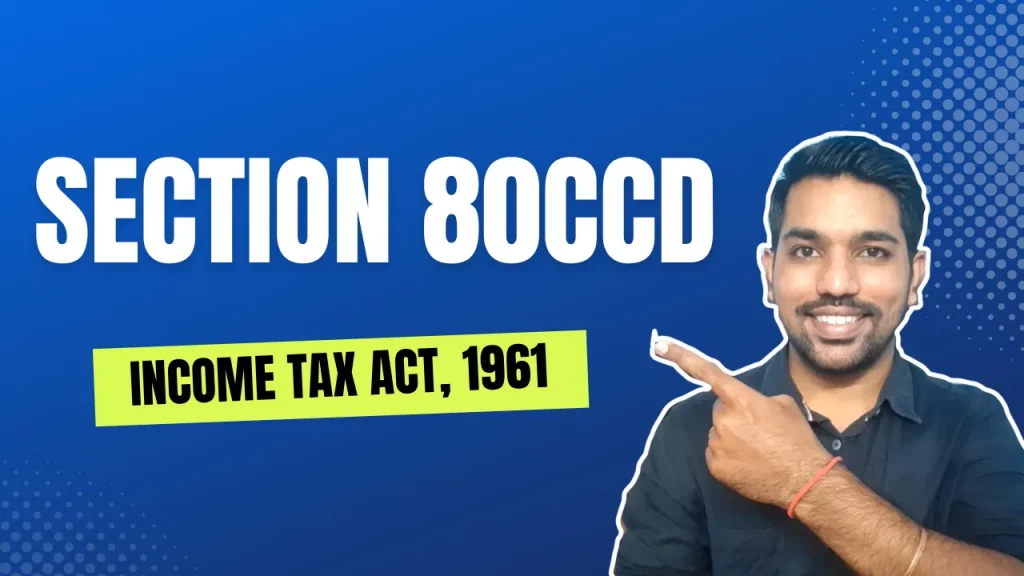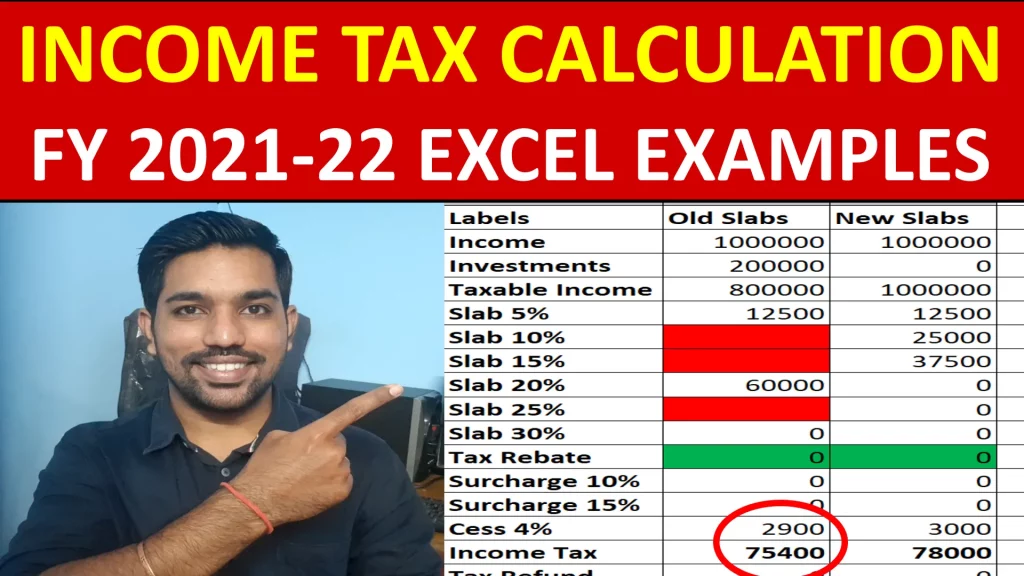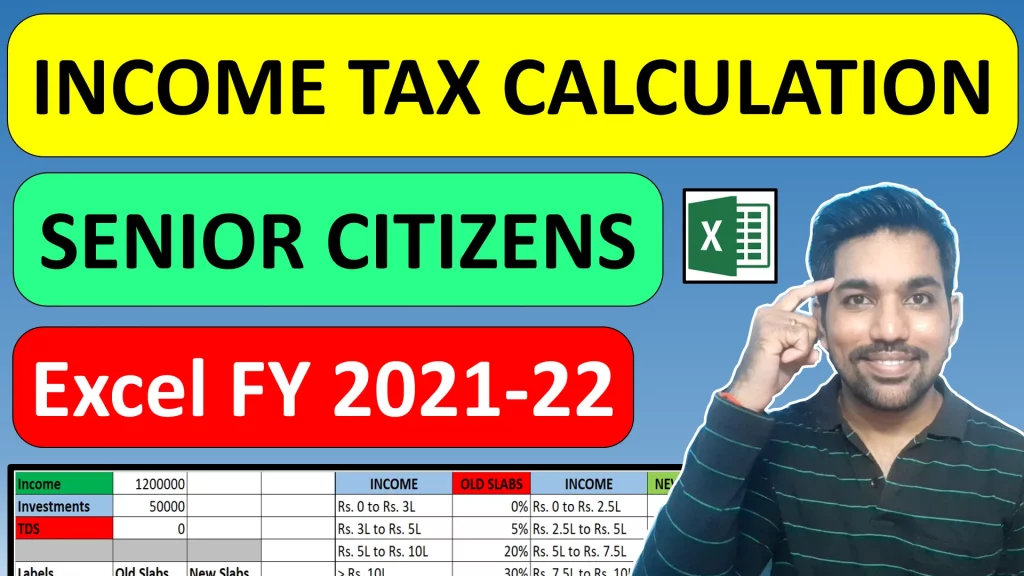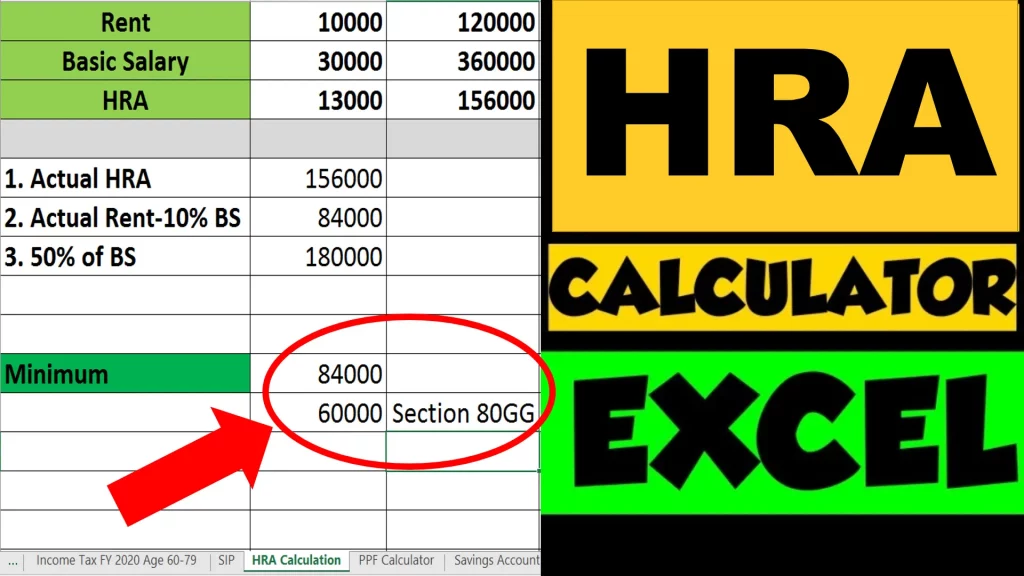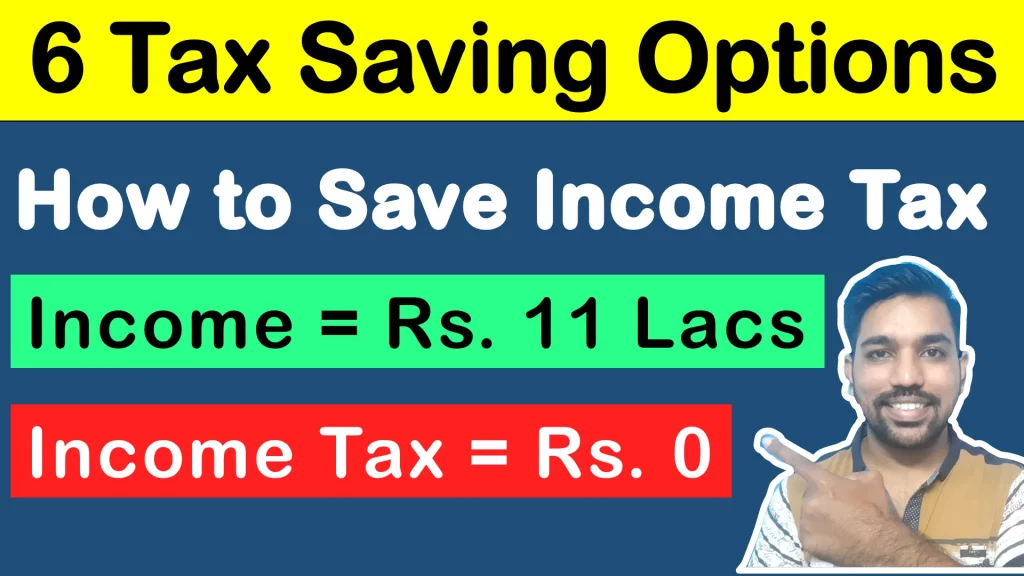Section 80CCD of Income Tax Act, 1961 helps us to save income tax by contributing towards National Pension Scheme (NPS) or Atal Pension Yojana (APY). This section is further sub divided into 80CCD(1) and 80CCD(2). While Section 80CCD(1) belongs to Employee’s contribution based on salary limits, Section 80CCD(2) belongs to Employer’s contribution to NPS. You can claim additional Rs. 50,000 as Deduction with old tax regime if you invest (self contribution) in NPS via Section 80CCD(1B).
- How to Contribute in NPS Online Video
- What is Section 80CCD?
- Limits of Section 80CCD
- Section 80CCD Categorization in Detail
- Tax Benefits with Section 80C – 80CCC, 80CCD(1), 80CCD(1B) and 80CCD(2)
- National Pension Scheme – Section 80CCD
- Atal Pension Yojana – Section 80CCD
- Conclusion
- Frequently Asked Questions
How to Contribute in NPS Online Video

Watch more Videos on YouTube Channel
Above video helps you to know how to contribute in NPS online and save income tax.
What is Section 80CCD?
Section 80CCD of Income Tax Act helps us to contribute towards National Pension Scheme (NPS) or Atal Pension Yojana (APY) and claim deductions to save income tax. This section is further divided in more subsections:
- 80CCD(1) – Individual’s contribution to NPS or APY from Income
- 80CCD(2) – Employer’s contribution to NPS on behalf of Employee
While 80CCD(1) can be claimed by employee and self employed individuals, 80CCD(2) can only be claimed by employees.
Let us now see the limits under Section 80CCD
Limits of Section 80CCD
Below are the deduction limits under Section 80CCD:
| Sections | Description | Deduction Limits |
|---|---|---|
| 80CCD(1) | Employee Contributions to NPS or APY up to 10% of Basic Salary + DA | Rs. 1,50,000 |
| 80CCD(1B) | Self Contribution to NPS or APY above the limits of Section 80CCD(1) | Rs. 50,000 |
| 80CCD(2) | Employer’s Contribution to NPS or APY | up to 10% Basic Salary + DA with old regime and 14% in new regime |
So based on the above table, total Deductions with Section 80CCD will be Rs. 2,00,000 that can be claimed in financial year with employee’s contribution – Rs. 1,50,000 with 80CCD(1) which is part of Section 80C and Rs. 50,000 with Section 80CCD(1B).
Apart from this, you can claim up to 10% or 14% of Basic Salary + DA with old and new tax regime respectively, when employer contributes to your NPS account every month. This will help you to save additional Income tax.
Section 80CCD Categorization in Detail
Let us now understand the categorization of Section 80CCD in details and their meanings:
Section 80CCD(1) Deduction
This subsection allows employees of private and government employees and self employed to claim deductions for investments made in National Pension Scheme (NPS) or Atal Pension Yojana (APY) in a financial year.
Following are some of the key features and points to remember for 80CCD(1):
- You must be of age between 18 to 60 years to contribute in this subsection using NPS or APY
- This subsection applies to NRI (Non resident Indian) as well
- Maximum deduction allowed for Employees is 10% of Basic Salary + DA (Dearness Allowance) in previous year
- For self employed or businessmen, maximum deduction allowed is 20% of Gross Total Income in previous year
- Maximum limit of Deduction under Section 80CCD(1) is capped at Rs. 1,50,000 in a financial year
ALSO READ: How to Open NPS Account Online
Section 80CCD(1B) Deduction
This subsection allows the individual to claim additional Rs. 50,000 with NPS, which is above the limit of Rs. 1,50,000 in a financial year
- You can open NPS account online by self
- Contribute in your NPS account online every year to claim deduction
- Maximum of Rs. 50,000 can be claimed in a financial year with Old Tax Regime
- It is available for employees and self employed
Section 80CCD(2) Deduction
While you contribute voluntarily or via your salary with 80CCD(1), 80CCD(2) allows you to claim deductions based on your employer’s contribution to NPS.
- Private sector employees can claim up to 10% of Basic Salary + DA if employer is contributing to NPS
- Government sector employees can claim up to 14%
- Budget 2025 Update: 10% and 14% of Basic Salary will be saved via employer with old and new tax regime respectively
So employees can take benefits of this contribution made by employer with Section 80CCD(2).
Use Income Tax Calculator in Excel to know Income tax with Old and New Tax Regime:
Tax Benefits with Section 80C – 80CCC, 80CCD(1), 80CCD(1B) and 80CCD(2)
Now since we have discussed all sub sections in detail, let us now understand the tax benefits limits with all these sections:
| Sections | Description | Deduction Limits |
|---|---|---|
| 80C | Various Tax Saving options including provident fund, PPF, etc. | Rs. 1,50,000 |
| 80CCC | Contributions to annuity and Retirement Plans | Part of Section 80C |
| 80CCD(1) | Employee contribution to NPS or APY up to 10% Basic Salary + DA | Part of Section 80C |
| 80CCD(1B) | Voluntary contribution by Individual in NPS or APY above 80CCD(1) | Rs. 50,000 |
| 80CCD(2) | Employer contributions to NPS or APY | 10% or 14% of Basic Salary + DA with old and new tax regimes respectively |
So as seen above, you get additional benefits of Rs. 50,000 as deduction with Section 80CCD(1B), over and above the limit of Rs. 1,50,000 with Section 80C. The limits of Section 80C includes with 80CCC and 80CCD(1) as well, capped at Rs. 1,50,000 in financial year.
Let us now understand some features of National Pension Scheme (NPS).
National Pension Scheme – Section 80CCD
- NPS full form is National Pension System
- By pension, we mean the amount we get after our retirement – when we no longer work specifically for money!
- The main Goal of opening and investing in NPS is to plan for our retirement, so that we get a stable income during our old age even when we are not working under our employer.
- NPS scheme was initiated by Central Government in 2004
- It was made available to all citizens of India in 2009
- Anyone between age 18 years to 60 years can open NPS Account and save for their retirement
- You can also be a NRI (Non Resident of India) and open NPS account
- You can invest in NPS up to the age f 60 years, after which you start getting pension
- NPS helps to save income tax with additional benefit of Rs. 50,000 with 80CCD(1B) as explained above
Watch below video about NPS to know more:

Atal Pension Yojana – Section 80CCD
- Atal Pension Yojana (APY) is also known as Pradhan Mantri Pension Yojana is another government-backed retirement scheme that provides individuals with a minimum guaranteed pension on retirement.
- This pension yojana is aimed primarily at people in the unorganized sector.
- Individuals between the age of 18 and 40 are eligible to apply for this pension scheme.
- Similar to NPS, APY contributions are locked in until 60 years of age, with premature withdrawals permitted under special circumstances
- Based on the contributions, individual can receive monthly pension from Rs. 1000 to Rs. 5000, which will be taxable
- APY contributions can be claimed under Section 80CCD(1) and Section 80CCD(1B) with same limits as compared to NPS
Conclusion
So Section 80CCD of income tax Act helps to save income tax for private and government employees. It also helps self employed save income tax with 80CCD(1B) being attractive deduction sub section since it provides additional benefit above the normal limit of Section 80C.
You should include NPS or PAY in your investment portfolio if not done so, to reap benefits or equity markets and have monthly pension during your retirement phase.
Some more Reading:
Frequently Asked Questions
What is included in 80CCD deduction?
80CCD includes subsections such as 80CCD(1), 80CCD(1B) – employees contributions to NPS or APY and 80CCD(2) – employer’s contribution to NPS or APY. These together have deduction limits of Rs. 2,00,000 that can help you save income tax
How much tax is exempt from 80CCD?
Maximum Rs. 2,00,000 can be claimed with 80CCD sub sections – Rs. 1.5 Lakh with 80CCD(1) and Rs. 50,000 with 80CCD(1B)
What is 80CCD 1 and 80CCD 2?
80CCD 1 belongs to employees contribution to NPS or APY and 80CCD 2 belongs to employer’s contributions
Is 80CCD deductible under 80C?
Yes 80CCD(1) is part of 80C and maximum allowed deduction is Rs. 1.5 lakh. You get additional benefit of Rs. 50,000 with 80CCD(1B) if you voluntarily contribute in NPS or APY, thus making total deductions of Rs. 2 lakh in financial year.
Save Home Loan Interest Amount!
Use Home Loan Excel Calculator that will help you to Save Interest Amount on Home Loan EMI.
Click below button to download Home Loan EMI and Prepayment Calculator in Excel:
Watch how Home Loan Calculator in Excel Works
Income Tax Calculator App – FinCalC
For Income Tax Calculation on your mobile device, you can Download my Android App “FinCalC” which I have developed for you to make your income tax calculation easy.
What you can do with this mobile App?
- Calculate Income Tax for FY 2025-26 and previous FY 2024-25
- Enter estimated Investments to check income tax with Old and New Tax Regime
- Save income tax details and track regularly
- Know how much to invest more to save income tax
- More calculators including PPF, SIP returns, Savings account interest and lot more
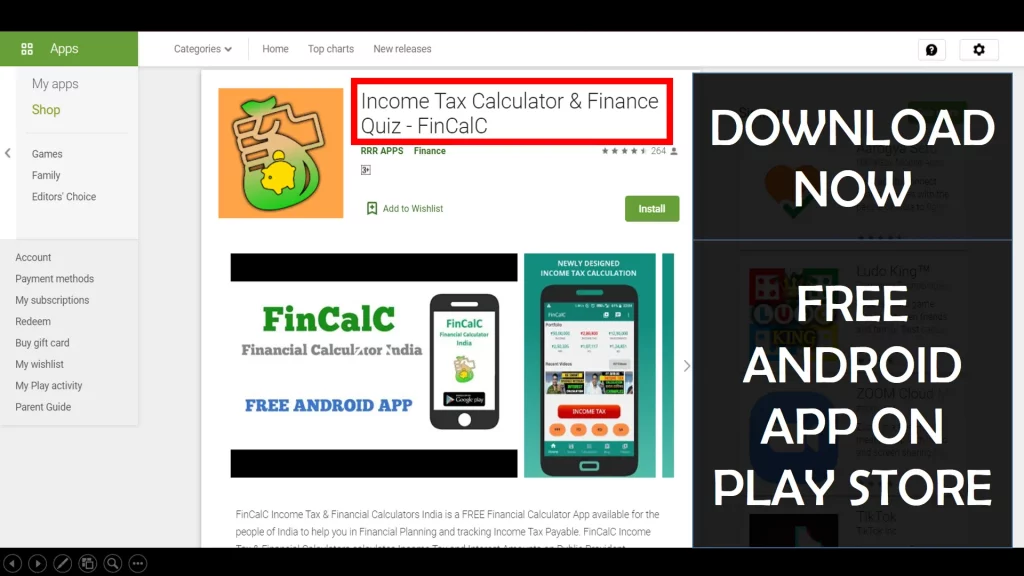
Use Popular Calculators:
- Income Tax Calculator
- Home Loan EMI Calculator
- SIP Calculator
- PPF Calculator
- HRA Calculator
- Step up SIP Calculator
- Savings Account Interest Calculator
- Lump sum Calculator
- FD Calculator
- RD Calculator
- Car Loan EMI Calculator
- Bike Loan EMI Calculator
- Sukanya Samriddhi Calculator
- Provident Fund Calculator
- Senior Citizen Savings Calculator
- NSC Calculator
- Monthly Income Scheme Calculator
- Mahila Samman Savings Calculator
- Systematic Withdrawal Calculator
- CAGR Calculator
I’d love to hear from you if you have any queries about Personal Finance and Money Management.
JOIN Telegram Group and stay updated with latest Personal Finance News and Topics.
Download our Free Android App – FinCalC to Calculate Income Tax and Interest on various small Saving Schemes in India including PPF, NSC, SIP and lot more.
Follow the Blog and Subscribe to YouTube Channel to stay updated about Personal Finance and Money Management topics.

